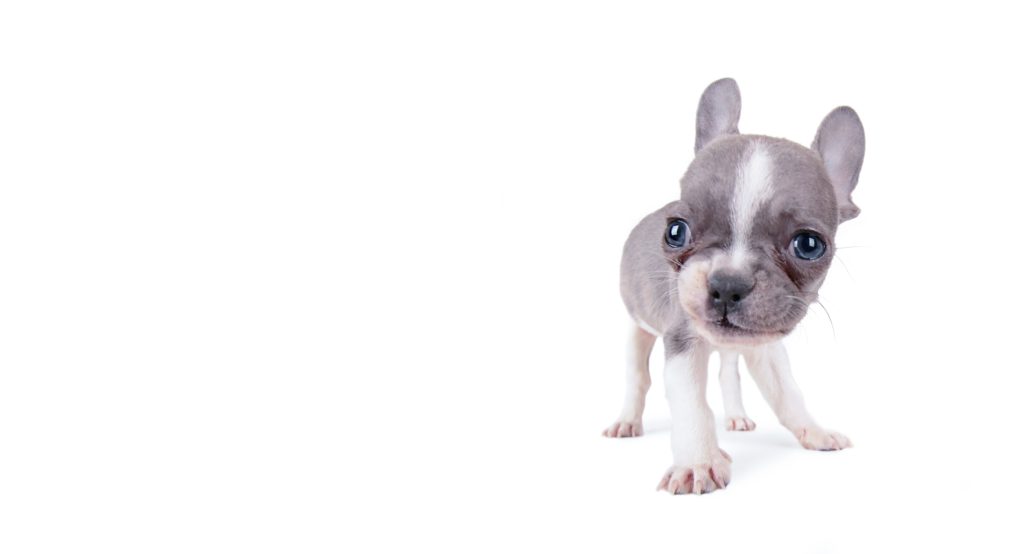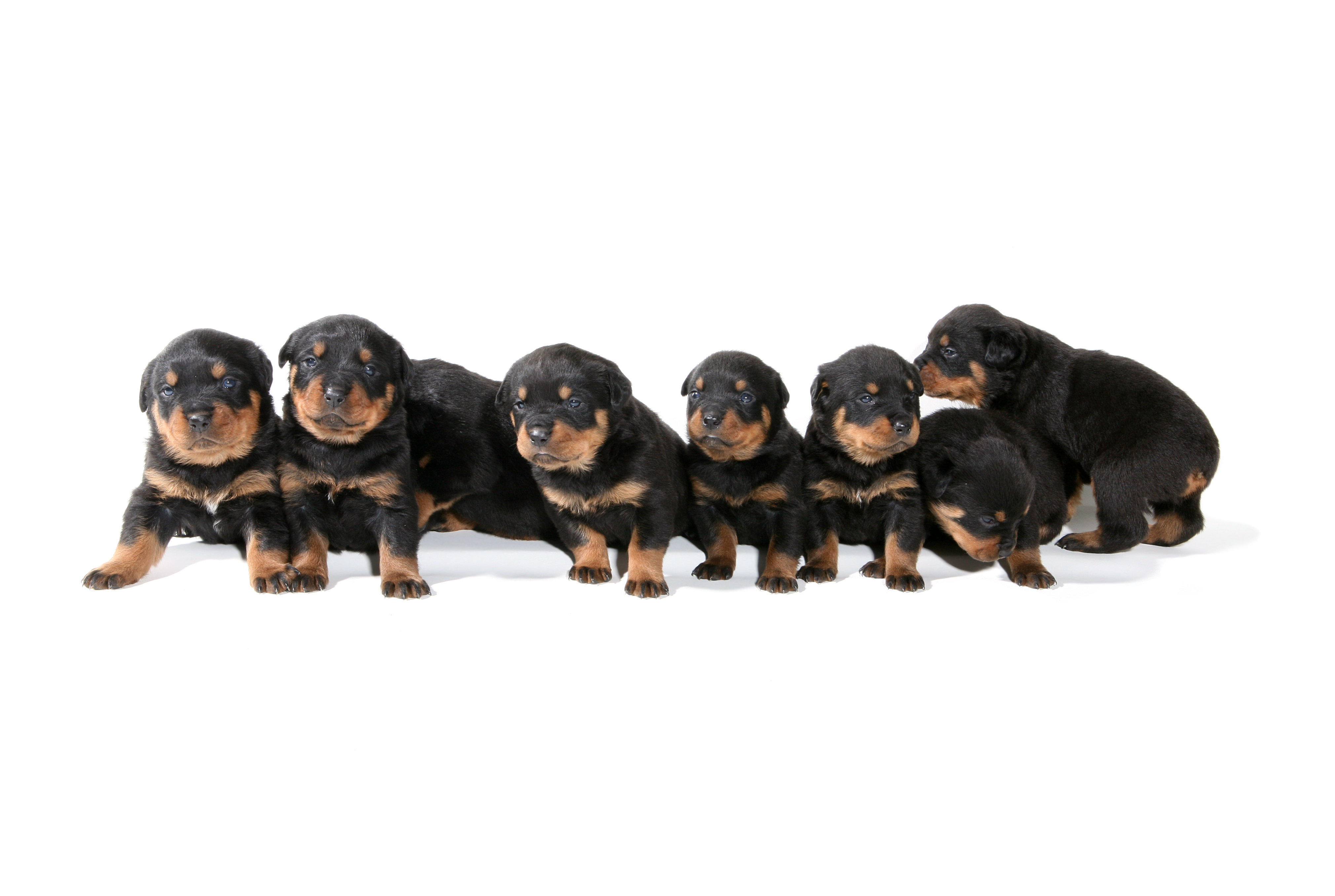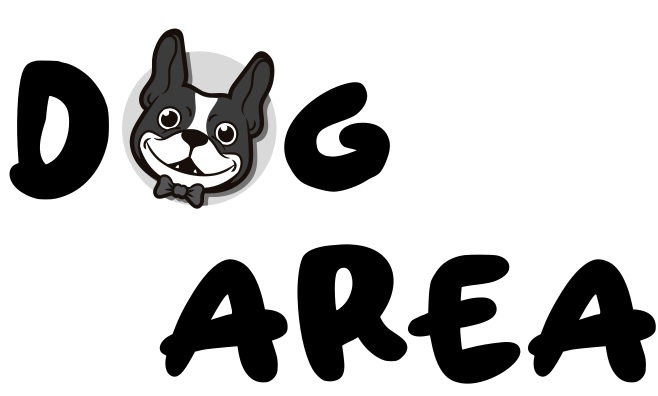Runt of the Litter Dog: Health Problems!
If you’re a keeper of multiple newborn pups, an important thing you should always keep in mind is the runt of the litter. For instance, you should know how to take good care of him and what health problems he’s prone to having.

In this article, we’ll be discussing what the runt of the litter dog is, the health problems he may face, and how to avoid them. Additionally, we’ll be guiding you through the proper care that you should provide for your little puppy in case his mother rejects him for being a runt.
So, without further ado, read on to learn more!
What Is the Runt of the Litter?
The runt of the litter puppy is the smallest pup in the litter. In terms of size, he’s the tiniest among his siblings. Regarding strength, he’s the weakest, with the smallest chance of survival and the highest rate of mortality. (Farricelli, 2022)
What Happens to the Runt of the Litter Puppy?
The survival of the fittest is one of the struggles that the runt of the litter faces. As he’s naturally born weak and small in size, he’s not able to compete with his siblings for food and nurture from their mother.
Thus, the runt of the litter pup, if not cared for properly, ends up weaker than the rest of his siblings, leading to plenty of health problems and possibly death. (Indrebø et al. 2007)
On the one hand, this competition aids the stronger and faster littermates to grow better as well as receive better care from their mother. On the other hand, the runt of the litter struggles to receive the same amount of nutrition and care.
Why Is There a Runt of the Litter?
Some puppies are born undersized because of the number of nutrients they receive during the pregnancy from their mother. Because some puppies’ connection to the placenta is weaker than other puppies’ connection, they receive fewer nutrients. (Andrew, 2015)
Thus, this makes them weaker, slower, and less favorable to their mother than their siblings. (Hines, 2022)
Is There a Runt in Every Litter?
Even though “runt of the litter” is a common expression, not every litter will have a runt. Some dogs, for example, only have one puppy per litter. Even when there are multiples, littermates are frequently of similar size. (Gray, 2022)
Will Runts Stay Small?
Worry not! Runts don’t stay small for long. With proper care, they grow to be just like their peers, sometimes even bigger and stronger.
They don’t stay the same size for long unless they’re born with a congenital health condition that causes them to stay tiny and doesn’t allow them to grow normally. (Allen, 2020)
Potential Health Problems for the Runt of the Litter!
It’s not guaranteed that the runt of the litter dog would be healthy. Thus, it’s crucial to be more aware of the health implications that your little pup may face.
1) Low Weight
Puppies should gain about 5% to 10% of their birth weight each day. However, some runt puppies are unable to feed themselves or are ignored by their mother. Thus, they stay small while their siblings continue to grow bigger.
Failure to gain weight is a warning sign of underlying issues that must be treated on the spot. This is because low birth weight animals are more prone to certain medical problems and frequently require human help to live. (Carlos, 2019)

2) Colostrum Milk Deficiency
Nursing for the first two days after birth allows puppies to get extra nutritional milk from their mother, called colostrum. These early meals provide immunological protection and nourishment to healthy mothers’ babies. (Baker, 2020)
Furthermore, runts frequently require additional nutrition to compensate for the nutrients they didn’t receive before birth. – Click this link!
If the runt doesn’t consume this milk, his immune system will be severely weakened, leaving him more susceptible to disease and infection. (Holloway, 2017)
3) Fading Puppy Syndrome
Puppies with fading puppy syndrome appear normal at birth but become fragile and ill within the first two weeks of their lives. Low birth weight, illness, and congenital abnormalities are some of the conditions that may cause this syndrome.
Litter runts are especially vulnerable to this illness due to their underdeveloped and weakened immune systems. Fader puppies are more likely to vomit and cry in a high-pitched tone. They may also hide in corners away from their littermates.
This syndrome may be made much more difficult and, sadly, inevitable by the mother’s neglect. It’s for this reason that a runt must be treated by a veterinarian. To get him through the crucial eighth week, he’ll almost certainly need fluids and other care. (Cosgrove, 2022)
4) Parasites and Infections
Parasites are very dangerous to puppies. Runts are even more vulnerable to parasites like hookworms and roundworms. These worms exploit the puppy’s body as a host, causing slow growth and weight drop, which can be fatal in a runt.
Furthermore, runts are less resistant to parasites that drain nutrition. Hookworms, especially, can debilitate a young puppy quickly. Roundworms, which are nearly always passed on by the mother, can cause a runt puppy to fail to grow. (Jay, 2020)
Luckily, most parasite infections can be treated safely and efficiently once they’ve been diagnosed.
5) Hypothermia and Hyperthermia
Many newborn puppy deaths are caused or contributed to by hypothermia. Puppies are poikilothermic, which means that for the first week or two after birth, they’re unable to control their body temperature.
A litter’s runt should remain close to his mother. However, if the mother abandons or rejects her babies, they, particularly the runt, will require an external source of warmth. (Brady, 2021)
Hyperthermia, often known as overheating, can develop in hot conditions or as a result of insufficient supplemental heat. Any of these two options should be indicated by higher or lower than normal temperatures for the puppy.
6) Dangers After Birth
Young animals, such as puppies in our context, are in greater danger of being sick or dying when nursing and being raised by their mothers, regardless of their size.
Puppies and kittens lack a properly mature immune system to defend themselves against sickness. They’re unable to control their body temperature.
Their bodies aren’t evolved enough to generate their own energy or make alarmingly low blood sugar a common occurrence. Because their kidneys are still developing, they can easily become dehydrated.
Temperatures between 94- and 102-degrees Fahrenheit can be life-threatening. Depending on the age of the runt puppy, adjust the room temperature.

7) Disease Risk
Even if some pet owners are lured to adopting the runt of the litter, they may be scared that because of their size, their new pet will constantly be unwell or have health issues.
Runts who are undersized at birth because of a lack of nutrients but can grow and gain weight generally catch up by the time they are weaned. These runts enjoy perfectly normal lives without any health problems. (The Runt of the Litter — Definition, Health Implications & FAQ, 2018)
However, if an animal’s runt size is caused by an underlying health concern, that’s a different situation. At weaning, these animals may still appear small and sickly. There’s a good chance these runts will continue to have major and expensive health problems.
How to Take Care of the Runt in the Litter Puppy?
Runts will often have the best chance of survival if they receive assistance from humans. You may need to care for a runt if you’re caring for a newborn litter of pups.
Help the Puppy Gain Weight
According to the puppy formula, a runt puppy should grow no less than 5% and no more than 10% of their present body weight per day throughout the first month.
Because runt pups are born weighing less than their siblings, you should keep a note of all your puppies’ weights to track their progress. – Find out more!
Keep the Puppy Warm
Hypothermia antibodies are more common in runts than hyperthermia antibodies. Therefore, you should make sure you’re always monitoring your pup’s temperature. Take the puppy’s temperature rectally with a pediatric thermometer.
The usual body temperature of newborn puppies is 95 to 98 degrees Fahrenheit throughout the first week of life. The usual body temperature rises to 97 to 100 degrees Fahrenheit in the second and third weeks.
By the fourth week, the temperature is the same as in adults, between 99.5 to 102.5 degrees Fahrenheit.
Weaning the Puppy
It’s safe to wean a runt puppy from its mother’s milk after it reaches the age of three and a half weeks. Blend your puppy’s meal with a puppy milk substitute and bottle feed it to the runt over the next two to three weeks.
Allow him to explore and nibble. Reduce the amount of milk and gradually increase the amount of kibble.
Your runt should be totally weaned at around 7 weeks. They should also drink water and eat dry dog food. Allow a sluggish-eating puppy to suckle from the mother as it’s a safer process at first.
Consult Your Vet
Take the runt to the vet right away if he’s not gaining weight, appears to be fading, exhibits indications of hypothermia, or doesn’t appear to be doing well.
The puppy may grow very weak if you wait too long. Runts are common, and with adequate care and nutrition, they can live normal lives. However, there may be underlying health issues that only a doctor can address.
Final Thoughts
The chances of the runt of the litter pup facing health problems are almost equal to the chances of your pup being like the rest of the litter.
However, to make sure your puppy stays healthy and away from risks, you should keep a close eye on them to ensure their health is improving over time.
Reference List
Allen, D. (2020, Oct.). Congenital and Inherited Disorders Affecting Multiple Body Systems of Dogs. Merck Manual. https://www.merckvetmanual.com/dog-owners/disorders-affecting-multiple-body-systems-of-dogs/congenital-and-inherited-disorders-affecting-multiple-body-systems-of-dogs
Andrew. (2015, Feb. 4). Is A Runt Unhealthy And Should You Buy One? Walkerville Vet. https://www.walkervillevet.com.au/blog/myth-29-the-runt-of-the-litter/
Baker, L. (2020, Oct. 1). 3 Ways to Take Care of a Runt Puppy. WikiHow Pet. https://www.wikihow.pet/Take-Care-of-a-Runt-Puppy
Brady, S. (2021, Apr. 24). Runt Of The Litter – What All Owners Should Know. Dog Food Care. https://dogfoodcare.com/runt-of-the-litter-what-all-owners-should-know
Carlos, D. (2019, Apr. 27). How to take care of the runt of the litter. Manilastandard. https://manilastandard.net/lifestyle/home-living/293350/how-to-take-care-of-the-runt-of-the-litter.html
Cosgrove, N. (2022, Apr. 23). Runt of the Litter in Dogs: Definition, FAQs & Health Implications. Hepper. https://www.hepper.com/runt-of-the-litter-info/
Farricelli, A. (2022, Apr. 16). Interesting Facts and Myths About the Runt of the Litter. Pet Helpful. https://pethelpful.com/dogs/Interesting-Facts-About-the-Runt-in-Puppy-Litter.
Gray, E. (2022, Jan. 18). Runt Of The Litter: What It Means, Health Implications & FAQs. Pet Keen. https://petkeen.com/what-runt-of-the-litter-means/
Hines, R. (2022, Apr. 22). Why Is My Puppy Or Kitten A Runt? Vet Space. https://vetspace.2ndchance.info/why-is-my-puppy-or-kitten-a-runt/
Holloway, S. (2017, July 17). Runt Of The Litter – What to expect and how to care for runt puppies. The Happy Puppy Site. https://thehappypuppysite.com/runt-of-the-litter/
Indrebø, A., Trangerud, C. & Moe, L. Canine neonatal mortality in four large breeds. Acta Vet Scand 49, S2 (2007). https://doi.org/10.1186/1751-0147-49-S1-S2
Jay. (2020, Apr. 7). Worms in Dogs – Prevention, Dog Worm List, Treatment & FAQs. Breeding Business. https://breedingbusiness.com/worms-in-dogs/
The Runt of the Litter — Definition, Health Implications & FAQ. (2018, March 20). Breeding Business. https://breedingbusiness.com/runt-of-the-litter/
